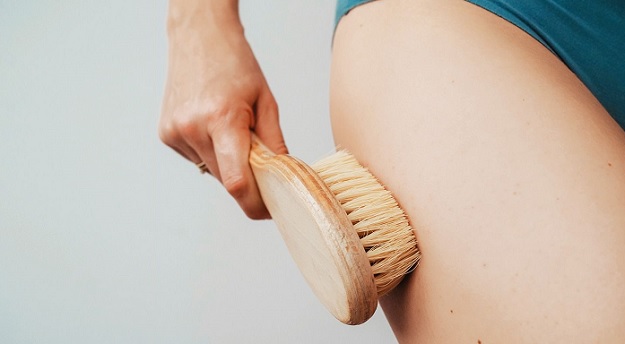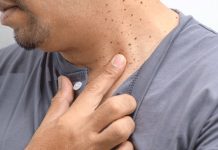Dry brushing has become a wellness craze that claims to exfoliate cleanse and enhance skin health. Despite the buzz many wonder Is dry brushing good for my skin This comprehensive tutorial will discuss dry brushing science advantages, how to perform it and suitability for all skin types.
Understanding Dry Brushing: What Is It?
Dry brushing uses natural bristles to massage the skin in circles gently. Before washing dry brushing removes dead skin, increases blood circulation and drains lymphatic fluid. The procedure is said to clear pores, decrease cellulite and smooth and brighten skin. Dry brushing is said to improve skin health tension and vitality. However you must understand its mechanics to establish its effectiveness and safety.
The Potential Benefits Of Dry Brushing
Dry brushing advocates claim several skin advantages but scientific data is few. One benefit is exfoliation as the brushes gently remove dead skin cells to expose softer smoother skin. Dry brushing may boost skin cell viability and luminosity by increasing oxygen and nutrient delivery.
Dry brushing stimulates the lymphatic system assisting in the deletion of toxins and debris. Improved lymphatic drainage may minimize skin puffiness edema and congestion clearing the complexion and reducing cellulite. Some say frequent dry brushing relaxes and rejuvenates like a massage. Since the rhythmic movements relax the mind and body many use it as a self care routine.
How To Dry Brush Effectively
Use the proper technique to get the advantages of dry brushing without discomfort or harm. For successful dry brushing follow these steps
Choose The Right Brush
Choose a long handled brush with natural bristles for easy reach. Avoid synthetic brushes since they may irritate the skin.
Start Dry
Before washing or bathing, brush dry skin. This makes the brushes slide across the skin without friction.
Gentle Strokes
Start brushing from the extremities to the heart in circles with mild pressure. Pay attention to sensitive regions and adjust pressure.
Focus On Problem Areas
Focus on dry rough or cellulite prone regions including thighs, buttocks and upper arms. Brush these regions longer to increase circulation and exfoliation.
Shower Afterwards
After dry brushing, shower to remove dead skin and debris. Finish with a moisturizer to hydrate and nurture skin.
Stick to these rules and add dry brushing to your skincare regimen 2 3 times a week to get the advantages without the risks.
Potential Risks And Considerations
Dry brushing may be a suitable skincare method but there are hazards and concerns. Skin irritation is a significant problem particularly for sensitive skin. Dry brushing may worsen eczema psoriasis and dermatitis by causing redness irritation and damage. Brushing too hard may create micro tears in the skin making it vulnerable to infection and additional damage.
To prevent skin damage avoid high pressure or extended sessions while dry brushing. Before dry brushing those with specific medical issues or skin allergies should visit a doctor. Dry brushing may increase skin sensitivity in pregnant women so they should also see their doctor first.
If the brush isn’t clean germs or illness might spread. To reduce this danger, clean the dry brush periodically with soap and water and let it dry between uses. To minimize cross contamination people with poor immune systems or open wounds should not share dry brushes.
Alternatives To Dry Brushing
If dry brushing isn’t for you other skincare methods give comparable advantages without the hazards. Exfoliating scrubs or peels which employ chemical or enzymatic substances to gently remove dead skin cells and reveal a smoother, more luminous complexion are popular alternatives.
Exfoliating cleansers face brushes and sponges may exfoliate without the abrasion of dry brushing. These mild treatments eliminate skin contaminants and promote cell turnover and circulation. Healthy skin requires frequent moisturization to avoid dryness and roughness.
After showering a nutritious moisturizer or body oil helps hydrate and lock in moisture improving skin suppleness and resilience. Manual lymphatic massage by a competent therapist may provide more focused and regulated lymphatic drainage. This hands on approach stimulates lymphatic flow and reduces tissue edema with gentle rhythmic motions.
Maximizing The Benefits: Tips For Effective Dry Brushing
Be alert and knowledgeable to get the most out of dry brushing and avoid the risks. Practical dry brushing tips
Choose The Right Time
Dry brushing before washing or bathing removes dead skin cells and dirt. For best results dry brush your skin 2 3 times weekly.
Be Gentle
Dry brushing with too much pressure or aggression may irritate or damage the skin. Try moderate circular movements and let the bristles work. Instead of cleaning promote circulation and lymphatic drainage.
Start Slowly
Start with shorter dry brushing sessions and increase time and intensity as your skin adjusts. Watch how your skin reacts and adapt your approach to prevent overstimulation or discomfort.
Use The Right Brush
Buy an excellent dry brush with natural bristles and a large handle for easy reach. Avoid synthetic brushes since they may irritate the skin. A medium firm brush exfoliates without hurting or damaging the skin.
Focus On Technique
Cellulite and roughness may be worse on the thighs, buttocks and upper arms. Spend time gently brushing these regions in circles to stimulate circulation and exfoliation. Use gentler pressure to avoid irritating sensitive areas including the chest, neck and face.
Dry brushing may improve skin health and look if you follow these suggestions and include them in your skincare regimen carefully and regularly.
The Mind Body Connection: Holistic Benefits Of Dry Brushing
Dry brushing is touted for its mental and physical advantages and skin benefits. Like a massage, repeated dry brushing and rhythmic strokes soothe and heal many people. The bristles’ moderate pressure and tactile feel on the skin help relieve tension, relax and decrease stress.
Dry brushing boosts circulation and lymphatic drainage energizing the body and senses. Some practitioners use dry brushing in the morning to naturally enhance energy and well being.
Incorporating Dry Brushing Into Your Skincare Routine
After learning about dry brushing advantages, hazards and procedures you may ask how to integrate it into your skincare regimen. Dry brushing suggestions for everyday use
Schedule Regular Sessions
Schedule time for dry brushing before washing or bathing. Dry brush 2 3 times weekly for consistent results and healthy skin.
Customize Your Approach
Customize your dry brushing regimen to your skin type problems and preferences. Explore various brushes, tensions and approaches to discover the perfect fit.
Listen to your body and alter your strategy for a pleasant and successful session.
Pair With Other Skincare Practices
Combine dry brushing with moisturization exfoliation and hydration to boost its advantages. After dry brushing use a moisturizer or body oil to seal in moisture and soften the skin.
Stay Consistent
Consistency is crucial to dry brushing success. Continue dry brushing in your skincare regimen to get its full advantages. Regular dry brushing and mindfulness give you healthier, more vibrant skin and a refreshed feeling of well being.
Conclusion
Mindful and regular dry brushing may improve skin health and well being. By learning its methods, hazards and alternatives people may decide whether to use dry brushing for skin care. Dry brushing may be used for exfoliation lymphatic drainage or holistic self care to promote healthy vibrant skin. Dry brushing may boost vitality and self care for all skin types when done correctly and in moderation with accompanying treatments.




